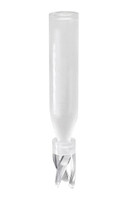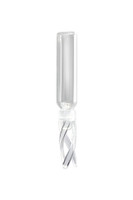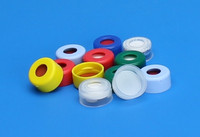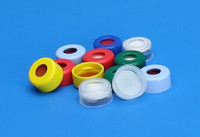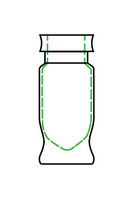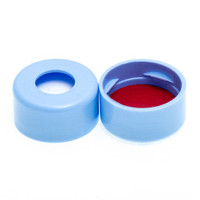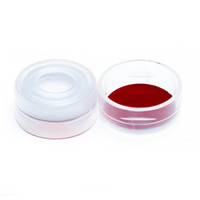Snap Top Vials

Snap Top Autosampler Vials
Chrom Tech’s Snap Seal and Snap Ring vials are a favorite among HPLC users seeking a convenient, tool-free capping solution. These 11 mm snap top vials eliminate the need for a crimping tool while providing a wide-mouth opening for easy pipetting and a larger target area for autosampler needles. Designed for efficiency and reliability, they’re ideal for high-throughput labs. Pair with Chrom Tech snap caps for a complete seal.
 |
 |
 |
 |
 |
 |
|
| 2 mL | 2 mL w/Grad Mark |
1.5 mL Recovery | 300 µL Fused Insert | 300 µL | 1.5 mL | |
| Clear Glass | CTV-1108 | CTV-1108GS | CTH-1800 | CTV-1830 | — | — |
| Amber Glass | CTV-1108A | CTV-1108GSA | — | — | — | — |
| Polypropylene | — | — | — | — | CTV-1204 | CTV-1108P |
| Cap & Septa* | ||||||
| 10 mil PE (1000/pk) | CTC-5200M (Clear) | |||||
| PTFE/Silicone | CTC-1305R (Red) | |||||
| PTFE/Silicone w/Slit | CTC-1370B (Blue) | |||||
| *Additional cap colors available upon request. | ||||||
 |
 |
 |
 |
 |
 |
|
| 50 µL | 100 µL | 200 µL | 250 µL | 250 µL | 300 µL | |
| Part No | CTI-9405 | TS-410 | CTI-9420 | CTI-9425 | CTI-9525 | 405342 |
| Color | Clear | Clear | Clear | Clear | Natural | Clear |
| Material | Glass | Glass | Glass | Glass | Polypropylene | Glass |
| Tech Tip: These inserts fit 9 mm Screw Thread, Snap Seal, Snap Ring™ and Wide Mouth Crimp vials. | ||||||
For optimal fit and recovery, match insert geometry with the vial mouth type. Contact Chrom Tech for compatibility guidance.
Frequently Asked Questions
Why choose snap top vials over crimp vials?
Snap top vials eliminate the need for a crimper, saving time while maintaining a secure seal for HPLC applications.
Are snap caps compatible with autosamplers?
Yes—Chrom Tech snap caps are designed for standard autosamplers and maintain tight, repeatable sealing under injection pressures.
Can polypropylene vials be used for LC/MS?
Yes, polypropylene vials are suitable for proteomics or when glass reactivity must be avoided. They’re solvent-resistant and economical.

